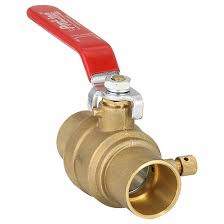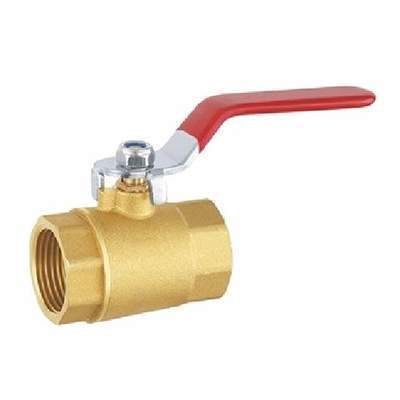Welcome to My Blog!
Before we dive into the content, if you’re interested in our products or have any questions, please feel free to visit our Contact Us page on the website. Our team is ready to assist you with inquiries, orders, or any support you may need.
Now, let’s get started on our journey together. I hope you find the content here insightful, engaging, and valuable.
Introduction

Fire protection ball valves are crucial components in modern fire safety systems. Designed to control the flow of water or other extinguishing agents, these valves ensure that fire suppression systems operate efficiently during emergencies. A fire protection ball valve typically consists of a spherical closure unit, a stem, and a handle or actuator for controlling flow. Its simple design allows for quick shut-off and minimal leakage, making it highly reliable in critical situations.
Understanding the importance of these valves in fire safety can help facility managers, engineers, and property owners make informed decisions about their fire protection systems.
Understanding Gate Valves
Gate valves are another common type of valve used in fluid control systems. Unlike ball valves, gate valves use a sliding gate to control flow, which moves perpendicular to the direction of the fluid. They are widely used in pipelines that require minimal pressure drop and are suitable for on/off control but not for throttling.
While gate valves have their advantages, such as lower cost and simplicity for certain applications, they tend to be slower to operate and may require more maintenance compared to ball valves. Understanding these characteristics is essential when comparing the two for fire protection purposes.
Fire Protection Ball Valve vs Gate Valve – Key Differences
When choosing between a fire protection ball valve and a gate valve, several key differences should be considered:
- Design and Structure Comparison: Ball valves have a compact, spherical design, while gate valves have a linear sliding gate.
- Operation Mechanism Differences: Ball valves allow for quick 90-degree turn operation, whereas gate valves require multiple turns to open or close fully.
- Maintenance Requirements: Ball valves generally require less maintenance and are easier to repair than gate valves.
- Durability and Lifespan: Ball valves are typically more durable under high-pressure conditions and frequent use.
- Price and Cost Considerations: Gate valves may be cheaper upfront, but ball valves often provide better long-term value due to lower maintenance costs and longer lifespan.
Types of Fire Protection Ball Valves
Fire protection ball valves come in different types to meet various industrial needs:
- Manual Fire Protection Ball Valves: Operated by hand, suitable for small systems and emergency shut-offs.
- Automatic Fire Protection Ball Valves: Equipped with actuators, these valves allow remote or automatic operation for large-scale fire systems.
- High-Pressure vs Standard Pressure Valves: High-pressure valves are designed for industrial applications and can handle extreme conditions, while standard pressure valves are more common in commercial or residential setups.
Installation Guide for Fire Protection Ball Valves
Proper installation is critical for ensuring optimal performance:
- Step-by-Step Installation Process: Begin by isolating the system, mount the valve according to flow direction markings, secure connections, and test for leaks.
- Common Installation Mistakes to Avoid: Incorrect orientation, insufficient sealing, and failure to follow manufacturer guidelines can lead to leaks or operational failure.
- Safety Precautions During Installation: Always follow safety protocols, depressurize the system, and wear protective equipment.
Maintenance and Troubleshooting
Maintaining fire protection ball valves ensures reliability and longevity:
- Routine Maintenance Checklist: Inspect for leaks, test operation, lubricate moving parts, and verify actuator functionality.
- Common Issues and How to Fix Them: Sticking valves, minor leaks, and actuator malfunctions can often be resolved with cleaning, adjustment, or replacement of seals.
- Extending the Lifespan of Your Valve: Regular inspection, proper operation, and prompt repairs can significantly extend the life of your fire protection ball valve.
Buying Guide and Selection Tips
Selecting the right valve is essential for system efficiency:
- How to Choose the Right Fire Protection Ball Valve: Consider pressure rating, flow requirements, and compatibility with your fire suppression system.
- Material Selection: Stainless Steel vs Brass: Stainless steel offers higher durability and corrosion resistance, while brass is cost-effective for certain environments.
- Top Brands and Manufacturers: Reliable suppliers include Honeywell, Tyco, and Reliable, known for quality and compliance with fire safety standards.
Pricing and ROI Considerations

- Average Price Range: Fire protection ball valves vary depending on material, type, and size, typically ranging from $50 to several hundred dollars.
- Cost vs Benefit Analysis: Investing in high-quality valves may have higher upfront costs but reduces maintenance, downtime, and risk of system failure.
- Factors Affecting Price: Material, pressure rating, automation, brand, and certification all influence the cost.
Conclusion
Choosing the right valve for your fire safety system is critical. While gate valves may be suitable for some pipelines, fire protection ball valves offer superior reliability, faster operation, and easier maintenance. By considering factors such as pressure rating, material, automation, and cost, you can select a valve that ensures both safety and long-term value for your facility. Proper installation, maintenance, and timely inspection will further enhance system performance and reduce risks in emergency situations.
FAQ
What is a fire protection ball valve?
A fire protection ball valve is a type of valve used in fire suppression systems to control the flow of water or extinguishing agents. Its spherical design allows for quick shut-off and minimal leakage.
How does a fire protection ball valve work?
It works by turning the ball inside the valve 90 degrees using a handle or actuator. When the hole in the ball aligns with the pipe, fluid flows; when turned perpendicular, the flow stops.
What are the advantages of using a fire protection ball valve?
They offer fast operation, durability under high pressure, low maintenance, and reliable performance in critical fire safety systems.
How often should a fire protection ball valve be inspected?
Regular inspections are recommended every 6–12 months to check for leaks, smooth operation, and proper actuator function.
Where can I buy a reliable fire protection ball valve?
Trusted suppliers and manufacturers like Honeywell, Tyco, and Reliable provide certified fire protection ball valves suitable for commercial and industrial applications.
Need Help Selecting the Perfect Fire Protection Ball Valve?
If you’re unsure which fire protection ball valve is ideal for your system, our specialists are ready to guide you. Contact us today for a customized consultation and make sure your fire safety system operates efficiently and meets all standards. Don’t wait until an emergency—reach out now to safeguard your property and your team!
